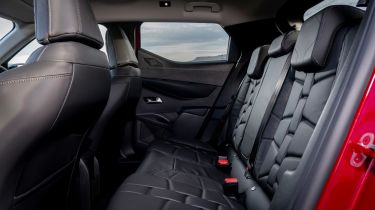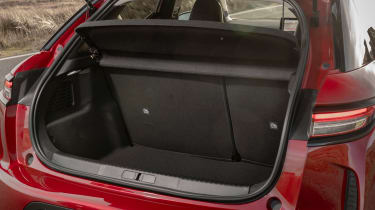DS 3 E-Tense review: boot space, seating & practicality
The electric version of the DS 3 loses nothing to its petrol counterpart when it comes to practicality – though it was far from the most spacious compact SUV to be begin with
| Length | Width | Height | Boot volume (seats up / down) |
|---|---|---|---|
| 4,118mm | 1,988mm | 1,534mm | 350 / 1,050 litres |
The DS 3’s compact dimensions might make it perfectly suited for bombing around town and weaving in and out of city traffic, but they also mean cabin space for passengers and cargo alike is limited. This certainly isn’t an issue you’ll find in the Kia Niro EV or a hatchback like the Cupra Born, both of which are similar money to the DS these days.
DS 3 E-Tense interior space, storage & comfort
Space inside the DS 3 E-Tense, especially in the back, is at a premium. The room for rear-seat passengers isn’t that generous – taller adults will struggle with the sloping roofline, feeling hemmed-in by the over-designed rear-window trim. The feeling of claustrophobia is only made worse in Performance Line cars because of their dark headlining.
For storage, there's a pair of small but perfectly positioned door bins, as well as a handy cubbyhole between the front seats. The glovebox on right-hand-drive cars is compromised due to the position of the fuse box; a frustration on myriad Peugeot and Citroen models for years.
Boot space
The E-Tense’s boot is identically sized to the one you’ll find in the petrol-powered DS 3, and at 350 litres is on par with electric family hatchbacks like the Cupra Born and MG4 EV. It’s much bigger than the MINI Electric's, too, but can’t match the 475 litres of space offered by the Niro EV. There’s little in the way of underfloor storage, which means you need to store the car’s charging cables at home or loose in the boot. There’s no added extra storage space under the bonnet in case you were wondering, as that’s where the electric motor and other components have been located.





